AMD Ryzen 7 9800X3D Performance
The AMD Ryzen 7 9800X3D codenamed “Granite Ridge” is a 4nm part. Yes, at STH having Intel Xeon 6 Granite Rapids and AMD Ryzen Granite Ridge is quite confusing.
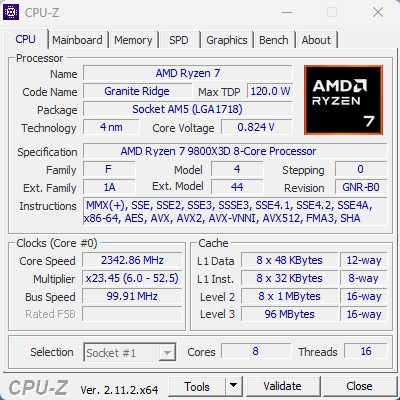
Python Linux 4.4.2 Kernel Compile Benchmark
This is one of the most requested benchmarks for STH over the past few years. The task was simple: we had a standard configuration file, the Linux 4.4.2 kernel from kernel.org, and made the standard auto-generated configuration utilizing every thread in the system. We are expressing results in terms of compiles per hour to make the results easier to read:
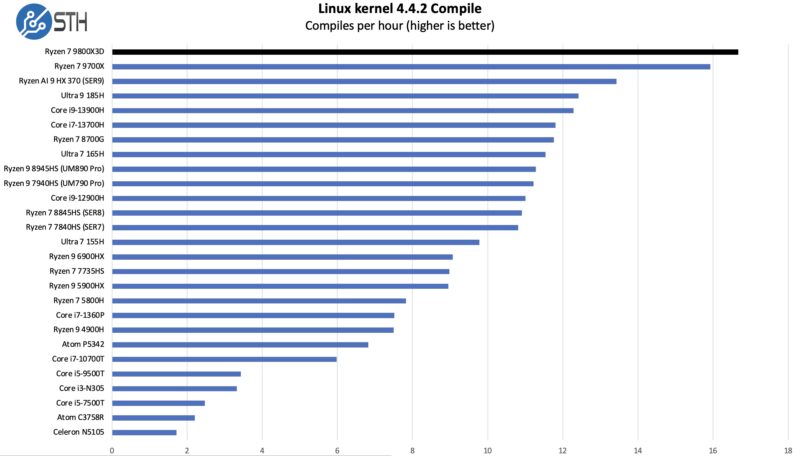
Even with the higher clock speed of the AMD Ryzen 7 9700X, we get more performance here due to the larger cache.
7-zip Compression Performance
7-zip is a widely used compression/ decompression program that works cross-platform. We started using the program during our early days with Windows testing. It is now part of Linux-Bench.
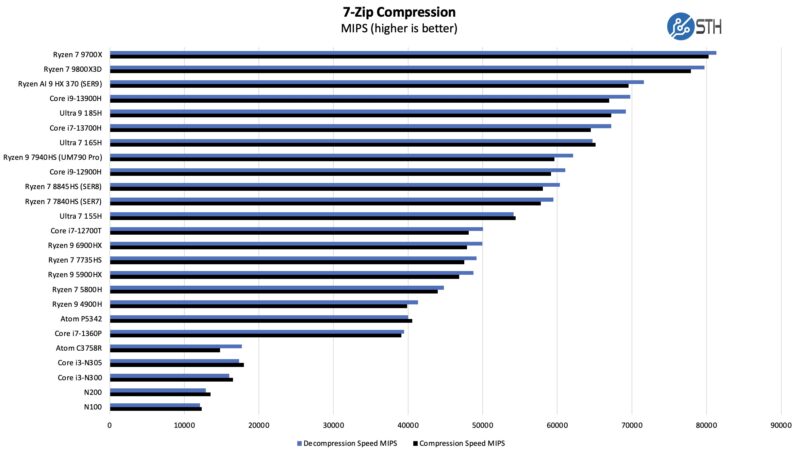
The higher power 8 cores is really pushing through this, even putting the 9800X3D beyond the AMD Ryzen AI 9 HX 390. Of course, this is largely due to just having more TDP to work with. Still, outpacing the 12 core HX series chip is not bad.
OpenSSL Performance
OpenSSL is widely used to secure communications between servers. This is an important protocol in many server stacks. We first look at our sign tests:
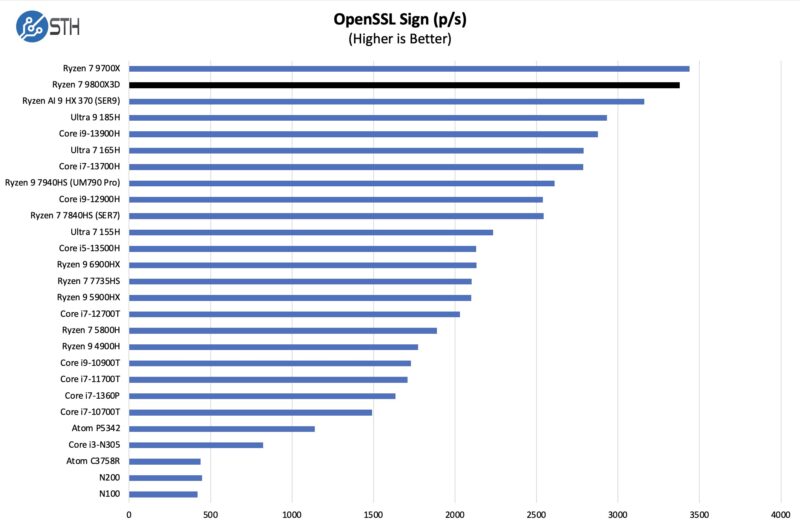
Here are the verify results:
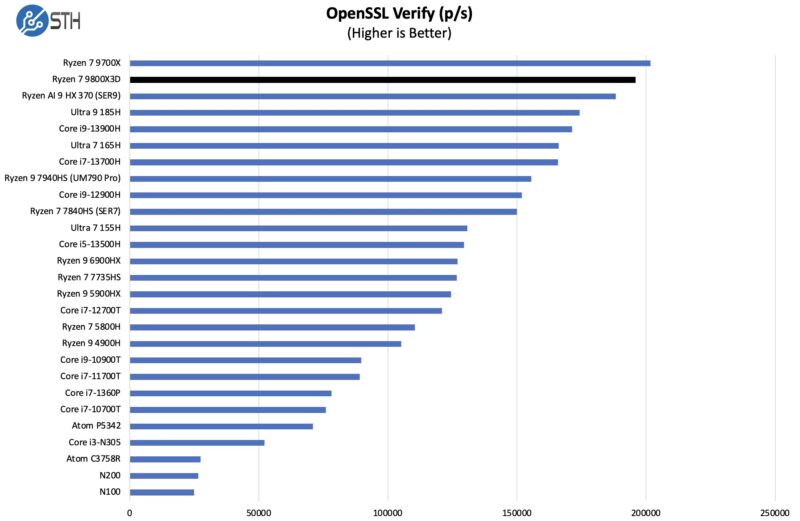
Something we noticed is that most of the smaller workloads actually ran well on the 9700X. When we ran more complex workloads, the 9800X3D performed better. Benchmarks we run on the server side tend to favor the X3D part by 10-16%.
AMD Ryzen 7 9800X3D Gaming from AMD
We typically do not do in-depth gaming testing, but AMD is showing an average of 8% better game performance using an AMD Radeon 7900XTX GPU.
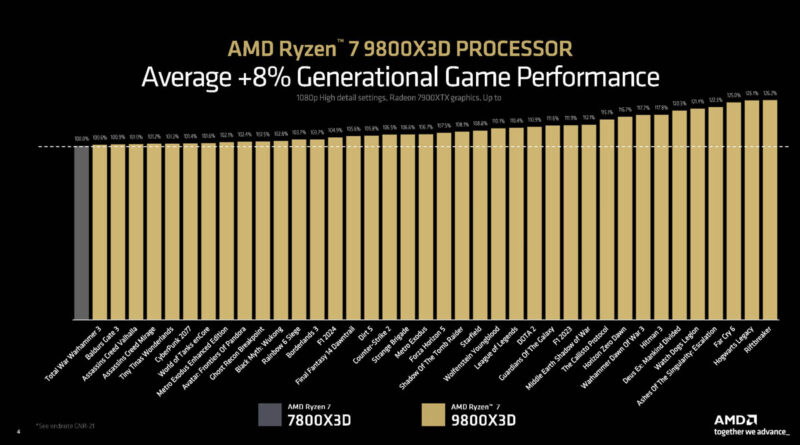
It is showing the same for a NVIDIA GeForce RTX 4090.
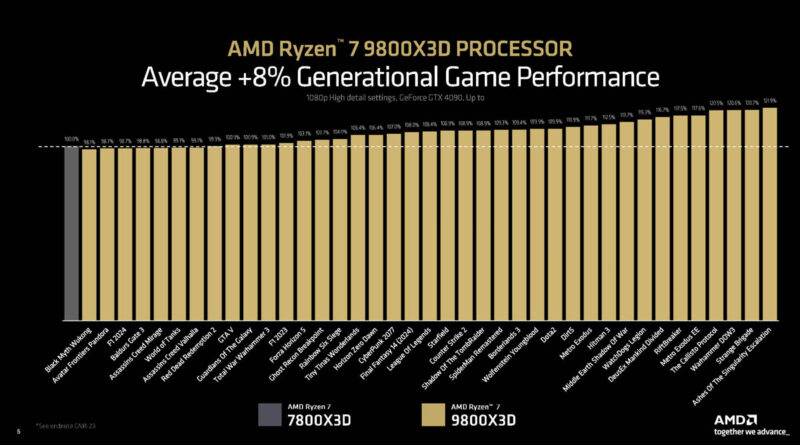
What is worth thinking about is if one got a great deal on the AMD Ryzen 7 7800X3D, would it be worth just using the older generation CPU.
Geekbench 5 and 6 Performance
Since many folks ask us to benchmark chips using Geekbench, here is Geekbench 5.
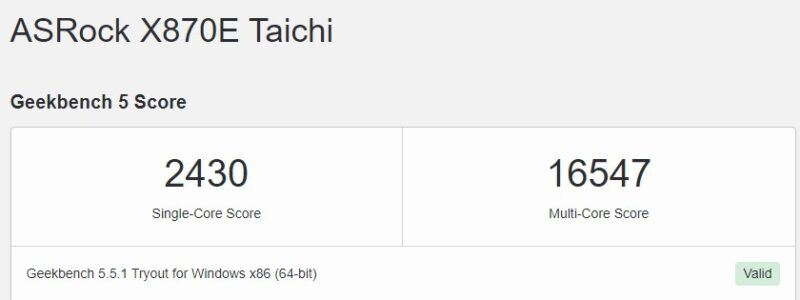
Here is Geekbench 6:

Overall, solid results.
Next, let us get to our power consumption.

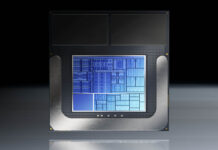


“It has neither a massive NPU nor integrated graphics”.
Are you sure about the graphics? There should be some basic graphics on the IO die (there are for the non-3D part). If AMD have disabled that for this chip (or if it has a different IO die), that’s significant enough that it should be explicitly called out.
@James
They haven’t disabled anything. It uses the standard AM5 IO die with 2 CUs of RDNA 2 iGPU.
As far as I know there’s only one SKU that has the iGPU disabled – Ryzen 5 7500F.
Does this downclock memory if 4 DIMMs are fully populated? If so, how much?
@James
Official specs are on AMD’s site. 4 DIMMs limit the officially supported speed to DDR5-3600. Anything above it is overclocking, but might work.
James – Just edited that to be “nor massive integrated graphics” to make it more clear. I know we tested it and the motherboard we used supports it.
I’d like to see an Epyc/Threadripper with 3D Vcache on all CCD’s.
Reason being that when you have a 7950x3d (and I assume same for 9950x3d), when you spin up a game, the scheduler nearly disables the non-3dvcache cores, so that the game doesn’t try to use both CCD’s. In some early cases the mixed ccd does not disable the non-vcache ccd and you get worse performance. This is mostly no longer the case, but if you don’t need every last ounce of frequency on those higher frequency/lower cache parts then why not?
An epyc that has Zen5 x3d ccd’s for all…probably cost a lot, but 128 cores (16ccd’s) …that would be 1.5Gb of cache for a single chip…databases would scream with performance.
we want you build server with 9800x3d too
please run 5-6 games on linux like cyberpank,fortnight,Canter strike VS 14900k
@ramin pro cyberpank. Canter strike.